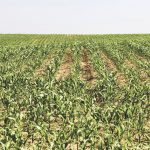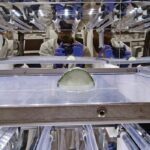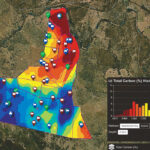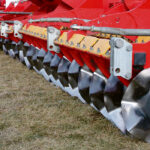As farms have increased in size, their storage requirements now mean far greater quantities of a single crop, whether it be canola or wheat. This means higher capacity, flat-bottomed bins. These are often centrally located, with larger capacity handling equipment and sometimes permanently installed handling equipment.

Farm growth pushes farmers to bring grain handling and conditioning home

Opinion: Barriers continue to fall for genetically modified wheat production
Glacier FarmMedia – Is genetically modified wheat finally ready for prime time? Researchers at Agriculture Canada in Lethbridge have planted their first greenhouse plots of wheat with genes edited to […] Read more

EU loosens rules for new genomic techniques
A recent decision by the European Parliament could open opportunities for crop development and international trade
Glacier FarmMedia – A European Parliament decision last month to adopt new rules for what it calls new genomic techniques (NGTs) is good news for agriculture and international trade, say […] Read more

Producers flag growing disconnect with public
Creating connections between producers, consumers and government called key to writing workable regulations for farms
Glacier FarmMedia – For Jeff Gross, the sharp divide between city folk and farmer attitudes about sustainability are clear from the field edge. “I farm around Regina or really close […] Read more

Scientist still sees CRISPR acceptance issues
Co-discoverer of gene editing says researchers have responsibility to be as transparent with the public as possible
Glacier FarmMedia – Agriculture has a powerful set of tools in CRISPR gene-editing technology to overcome the twin challenges of preserving and increasing food production while minimizing greenhouse gases, said […] Read more

UV light holds grain decontamination potential
Researchers want to build pilot-scale UV sanitation unit to test stored grain
Glacier FarmMedia – Tatiana Koutchma foresees a slew of new applications for ultraviolet sanitation, whether it’s helping to keep meat packing lines free of SARS-CoV-2 or knocking fusarium fungus out […] Read more

Data needed to cash in on carbon credits
An Australian company wants to digitize soil test results for farmer use and monitoring
Glacier FarmMedia – To monetize carbon sequestration, farmers must prove they are doing it. That means data, tracked over time. From a soil science perspective, the benefits of carbon in […] Read more

Swedish disc offers new approach to seed bed prep
Glacier FarmMedia – A new variation on the familiar disc tackles the challenges of managing crop residues, volunteer plants, and weeds, while also preparing the seed bed for a crop. […] Read more
